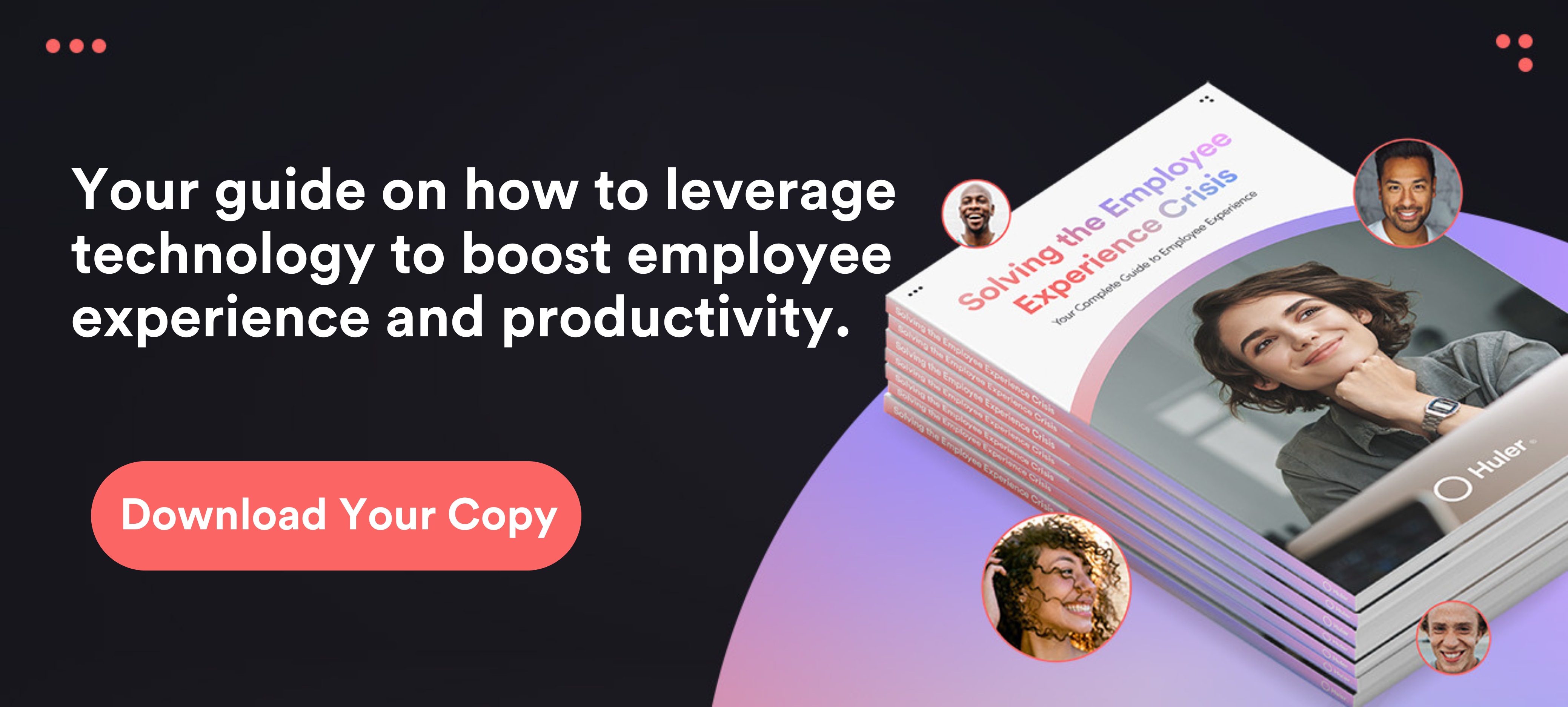The employee experience is the journey an employee takes from recruitment to exit interview. It starts the moment someone sees a job advert and and continues until their last day in the business.
While the length of each digital employee experience will vary, by and large the touchpoints within the journey are the same or similar. It is within these touchpoints that organisations can go about enhancing the employee experience in line with what employees want and the needs of the business.
If that sounds like a big job, that’s because it is. Happily, our Head of People and Talent, Suzi Archer, is on hand to share 5 ways of enhancing the employee experience that you aren’t going to want to miss. Read on to get stuck in!
Enhancing The Employee Experience Through Digital Transformation
A healthy employee experience can be transformative for any business. Not only is it good for employee retention, it also has a big impact on employee morale, empowerment, wellbeing, productivity, culture, change management, colleague relationships and much more.
As the way we work evolves, it is vital to change up our approach to the employee experience in line with that. Remote and hybrid working, for example, has changed when and how we work, as well as the ways we communicate.
For HR professionals and teams, now is certainly the time to pause and consider how the adoption of new technologies and ways of working can be used to enhance the staff experience. We should also consider how we continue to make work human despite rapid adoption of digital workplace solutions to ensure a personalised, empathetic approach at every turn.

Putting Employees In The Driving Seat
In The New Elements Of Digital Transformation, Didier Bonnet and George Westerman explore how organisations can become ‘digital masters’ by cultivating two capabilities: digital capability and leadership capability.
The elements of digital capability place more emphasis on employee experience, focusing on three components:
- Augmentation – Using technology to support employee productivity and performance.
- Future Readying – Embracing new ways of training employees.
- Flexforcing – Sourcing talent by training employees in multiple skills and using more freelance workers and independent contractors.
The updated framework acknowledges that ‘employees can be either the greatest inhibitors or the greatest enablers of transformation success’. Therefore, organisations should focus on the employee experience just as intently as the customer experience to make these new changes stick.
But how?
5 Ways Of Enhancing The Employee Experience
Start With Culture
The best employee experiences and journeys grow from core values held within well-structured cultures. These fundamentals create a mutual understanding between leaders and employees that facilitates trust and confidence.
When mapping out the employee journey you should consider whether current processes and procedures resonate with those core values. This starts with your onboarding process, the main objective of which is to integrate employees into the corporate culture, and ends at exit interview, where reinforcing those values is just as crucial.
Understand Your Employees
A good employee experience is inclusive, equal, and enjoyable.
Creating employee personas is an effective way of finding out what your people want and need and shaping the employee journey accordingly. For example, what millennials want in the workplace might look very different to what older or younger generations expect from their employers.
Employee personas can be created by using the information you have from or relating to an employee, such as age, length of employment, career progression, goals, and performance.
What’s most important to remember is that your employee experience will organically change during periods of transformation. For example, if you have developed a new remote onboarding process the induction experience for new starters will look very different now to what it did two years ago. For this reason, it’s important to consider impact to the experience of your staff with every new change in the business.
Harness The Power Of Technology
There are many established and emerging technologies that have the potential to help your employees work faster, smarter, and more safely.
One of these is artificial intelligence. According to research by Accenture, human-machine collaboration will increase productivity and revenue by 39% in the coming years.
An example of this is Natural Language Processing (NLP) which forms part of the AI landscape. NLP helps algorithms better understand and interpret written and spoken languages. NLP can be used in several areas from recruitment (in the form of data-driven CV screening for better hiring decisions) to remote working apps, digital workplace platforms and software.
Other technologies include virtual reality, robotics, augmented reality, and machine learning. The potential to utilise these kinds of technology to enhance the employee experience, automate time consuming tasks and boost productivity is huge and growing all the time.
Push Upskilling & Professional Development
In a rapidly changing landscape, employees need the right skills to keep up. That is why prioritising learning and development in your organisation is key to the employee experience.
Some companies may find that their current L&D strategies are falling short due to a lack of engagement or accessibility. Others may see that the old methods of training aren’t fit for purpose in a hybrid or remote working environment.
In some cases, a company-wide L&D overhaul might be needed, starting with identifying new, more relevant, learning and development goals for employees and extending to creating more personalised digital learning experiences that are flexible and accessible from anywhere. This could be through bespoke eLearning courses delivered through an LXP, on-the-job micro-learning opportunities, mentoring schemes or structured training.
Ask For Feedback
Getting feedback on your employee experience is one of the best ways to refine and adjust it to meet the needs of your people. Lots of employers might shy away from asking for feedback, but without it you’ll find the task of identifying and fixing problems within the journey much harder – and your solutions might not always hit the mark.
There are many different ways of getting feedback from your employees. It can be done through one to one meetings with managers, or with online employee surveys. Lots of employee experience platforms also offer insights into the success of employee initiatives and how much your staff are interacting with certain tools or internal communications.
Employee feedback isn’t a ‘one and done’ exercise either. Instead, it should be a continuous process built into your employee experience framework that gives you key insights at the different touchpoints of the employee journey.
Getting Started
Designing and refining your employee experience requires a holistic, personalised approach that aims to understand what your employees need, want and expect from an employer. While there isn’t a one-size-fits-all solution to this, there are ways and means of better understanding your people and adjusting the employee journey in line with that.
Here at Huler, we’re passionate about helping businesses big and small create people-first employee experiences for their hybrid and distributed workforces with the help of our digital workplace solutions. To find out more, check out HulerHub – the digital workplace platform that enhances the employee experience by putting everything your staff need in one place and allowing them to personalise their workplace to meet their needs and wants. Book a demo today to see it in action!






